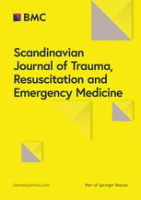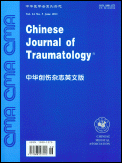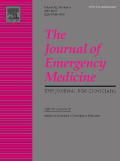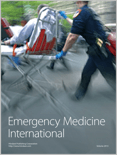
European Journal of Trauma and Emergency Surgery
Scope & Guideline
Advancing the Frontiers of Trauma Care
Introduction
Aims and Scopes
- Trauma Management and Care:
Research articles focus on the comprehensive management of trauma patients, including pre-hospital care, emergency room protocols, and post-operative outcomes. The journal showcases studies that evaluate trauma systems and their effectiveness in improving patient care. - Surgical Interventions in Trauma:
The journal publishes studies on various surgical techniques and their outcomes in treating trauma-related injuries, including orthopaedic surgery, neurosurgery, and vascular surgery. This includes comparative analyses of surgical approaches and innovations in surgical techniques. - Multidisciplinary Approaches to Trauma:
Emphasizing collaboration among various specialties, the journal highlights multidisciplinary studies that integrate different fields such as emergency medicine, surgery, and rehabilitation to improve trauma care and patient outcomes. - Trauma Epidemiology and Injury Patterns:
Publications often explore the epidemiology of trauma, identifying trends in injury patterns, risk factors, and outcomes across different populations. This includes studies on specific demographics, such as pediatric and geriatric trauma. - Quality Improvement and Patient Safety:
The journal focuses on research aimed at improving clinical practices and patient safety in trauma care. This includes studies on the implementation of guidelines, quality indicators, and protocols that enhance trauma care delivery. - Innovations in Trauma Care:
Research on cutting-edge technologies and methodologies in trauma care, including the use of 3D printing, artificial intelligence, and advanced imaging techniques, is a significant aspect of the journal's contributions. - Outcomes Research and Patient-Reported Outcomes:
The journal places importance on studies that assess long-term outcomes and the quality of life of trauma patients, including patient-reported outcomes and the impact of injuries on daily functioning.
Trending and Emerging
- Prehospital Care Innovations:
Recent publications emphasize advancements in prehospital care, including the use of telemedicine, prehospital protocols, and the effectiveness of early intervention techniques. This trend is crucial as it aims to improve outcomes by enhancing care before patients reach the hospital. - Trauma and COVID-19:
The impact of the COVID-19 pandemic on trauma care has become a significant area of interest, with studies exploring how the pandemic has altered trauma patterns, patient management, and surgical practices. This emerging theme reflects the ongoing relevance of pandemic-related challenges in trauma care. - Machine Learning and AI in Trauma Care:
There is an increasing trend towards utilizing artificial intelligence and machine learning for predictive analytics in trauma care. Research focuses on developing algorithms to predict outcomes, optimize treatment strategies, and enhance decision-making processes in trauma settings. - Patient-Centered Outcomes and Quality of Life:
Emerging themes include a focus on patient-reported outcomes and quality of life assessments following trauma. This trend highlights the growing recognition of the importance of patient-centered approaches to evaluate the effectiveness of trauma interventions. - Minimally Invasive Techniques and Technologies:
The journal is increasingly publishing research on minimally invasive surgical techniques and the integration of new technologies, such as robotic-assisted surgeries and 3D printing, which are revolutionizing trauma care and improving patient recovery. - Frailty and Geriatric Trauma:
A growing emphasis on the management of geriatric trauma patients, particularly related to frailty and its impact on outcomes, reflects an increasing awareness of the unique challenges posed by aging populations in trauma settings.
Declining or Waning
- Traditional Surgical Techniques:
There is a noticeable decrease in publications focusing solely on traditional surgical techniques as the field moves towards minimally invasive and innovative approaches. This reflects a broader trend towards adopting less invasive methods that offer quicker recovery times and improved outcomes. - Single-Center Studies:
The journal has seen a reduction in the number of single-center studies, with a shift towards multicenter and collaborative research efforts. This may indicate a growing emphasis on larger, more comprehensive studies that can provide broader insights into trauma care. - Non-Evidence-Based Practices:
There is a waning interest in studies that do not adhere to evidence-based practices. As the field matures, there is a stronger focus on research that supports clinical guidelines and evidence-based interventions. - Basic Science Research:
The journal appears to be moving away from basic science research related to trauma, such as animal models and laboratory studies, in favor of clinically relevant research that directly impacts patient care and outcomes. - Retrospective Analyses of Established Protocols:
While retrospective studies are still valuable, there seems to be a decline in studies that merely confirm existing protocols without exploring innovative or alternative approaches to trauma management.
Similar Journals

Indian Journal of Neurosurgery
Elevating Neurosurgery: Where Research Meets PracticeIndian Journal of Neurosurgery, published by GEORG THIEME VERLAG KG, serves as a pivotal resource in the field of neurosurgery and clinical neurology. With an ISSN of 2277-954X and E-ISSN 2277-9167, this Open Access journal has made significant strides since its transition to an accessible format in 2012, ensuring that groundbreaking research is available to the global scientific community. The journal, situated in Stuttgart, Germany, aims to publish high-quality and innovative research, reviews, and discussions that address contemporary challenges in neurosurgery. Despite its recent ranking of 465/551 in Medicine (Surgery) and 361/400 in Medicine (Neurology - clinical), with percentiles of 15% and 9% respectively, the Indian Journal of Neurosurgery fosters a platform for emerging ideas that can propel advancements in neurosurgical practices. Researchers, professionals, and students are encouraged to contribute to and benefit from this dynamic publication, which continues to influence the evolution of neurosurgical knowledge and practices.

Canadian Journal of Emergency Medicine
Connecting Professionals for Enhanced Healthcare DeliveryWelcome to the Canadian Journal of Emergency Medicine, an esteemed publication in the field of Emergency Medicine published by SPRINGER HEIDELBERG. With its ISSN 1481-8035 and E-ISSN 1481-8043, this journal serves as a vital resource for cutting-edge research and reviews from 1999 to 2024, maintaining a prominent position in the academic landscape as evidenced by its Q2 ranking in the Emergency Medicine category and a commendable Scopus ranking of #35 out of 109 journals. The journal is committed to advancing medical practices and improving patient outcomes through rigorous- peer-reviewed articles that address contemporary challenges and innovations in emergency care. Though it is not an open-access publication, it remains an essential platform for sharing knowledge among health professionals, researchers, and students dedicated to optimizing emergency medical services and enhancing overall healthcare delivery.

Scandinavian Journal of Trauma Resuscitation & Emergency Medicine
Unlocking New Frontiers in Critical Care and ResuscitationThe Scandinavian Journal of Trauma Resuscitation & Emergency Medicine, published by BMC, stands as a leading open-access platform dedicated to advancing the fields of trauma, resuscitation, and emergency medicine since its inception in 2008. With an ISSN of 1757-7241 and an impressive track record, this journal has established itself in the top quartile of critical care and emergency medicine, achieving Q1 rankings in both categories for 2023. Its Scopus rankings further underscore its importance, placing it among the top 11 journals in emergency medicine and the 23rd in critical care and intensive care medicine, signaling a strong impact within the academic community. As we converge toward 2024, the journal continues to provide researchers, clinicians, and students with valuable access to cutting-edge research and developments in the sector, contributing significantly to knowledge, practice, and policy in emergency care. Located in the heart of the United Kingdom, the journal remains dedicated to its mission of fostering innovation and dissemination of high-quality research, ensuring that vital medical advancements reach those who need them most.

Unfallchirurgie
Connecting Professionals with the Latest in Surgical Advancements.Unfallchirurgie, published by SPRINGER, is a pivotal journal in the domains of Emergency Medicine, Orthopedics, and Sports Medicine, serving as a vital resource for researchers, clinicians, and students in Germany and beyond. Launched in 2022, this journal has quickly established itself within the scientific community, currently holding a Q3 quartile ranking in the competitive fields of Surgery, Emergency Medicine, and Orthopedics according to the 2023 metrics. With an ISSN of 2731-7021 and an E-ISSN of 2731-703X, it facilitates the dissemination of groundbreaking research and clinical practices pertinent to trauma and surgical care. Although not an Open Access journal, Unfallchirurgie maintains its commitment to excellence through selective publication and rigorous peer review, ensuring that only high-quality research reaches its audience. With its centralized address at ONE NEW YORK PLAZA, SUITE 4600, NEW YORK, NY 10004, UNITED STATES, Unfallchirurgie continues to contribute significantly to the advancement of knowledge and practice within its field, making it a must-read for professionals aiming to stay at the forefront of trauma care innovations.

Journal of Plastic Surgery and Hand Surgery
Connecting Professionals Through Groundbreaking DiscoveriesThe Journal of Plastic Surgery and Hand Surgery, published by Medical Journal Sweden AB, stands as a significant resource in the field of surgical medicine, focusing on advancements and innovations in both plastic and hand surgery. With an ISSN of 2000-656X and an E-ISSN of 2000-6764, this journal is committed to disseminating high-quality, peer-reviewed research that reflects the latest trends and practices within the specialty. Operating under an Open Access model, the journal ensures that critical information is readily available to a global audience, enhancing collaboration and knowledge exchange among professionals and researchers. The journal boasts an impressive Scopus rank, sitting at #258 out of 551 in the medicine and surgery category, positioning itself within the 53rd percentile and further solidifying its influence in the medical community. As it converges its scope from 2010 to 2024, contributors are encouraged to elaborate on pioneering methods, the intricacies of surgical techniques, and the evolving landscape of patient care. The Journal of Plastic Surgery and Hand Surgery is more than just a publication; it is a platform dedicated to fostering dialogue and advancements in the vital field of surgery.

Chinese Journal of Traumatology
Enhancing understanding of trauma through open access knowledge.Chinese Journal of Traumatology, published by Elsevier Inc, serves as a pivotal platform for the dissemination of cutting-edge research in the fields of Emergency Medicine, Orthopedics, and Surgery. With an impressive Q2 ranking in several medical categories and an Open Access model since 2010, this journal ensures that critical findings reach a broad audience, fostering collaboration and advancement among researchers, healthcare professionals, and students alike. The journal addresses trauma-related issues, encompassing innovative methodologies and clinical practices while promoting the latest breakthroughs in public health. With a mission to enhance the understanding and treatment of traumatic conditions, the Chinese Journal of Traumatology significantly contributes to the global knowledge base, making it an essential resource for anyone involved in trauma care and research.

Open Access Emergency Medicine
Connecting researchers to the forefront of emergency healthcare.Open Access Emergency Medicine, published by DOVE MEDICAL PRESS LTD, is a premier journal dedicated to the dynamic fields of Emergency Medicine and Emergency Nursing. With its ISSN 1179-1500, this journal has established a notable presence since its inception as an Open Access platform in 2010, offering unrestricted access to high-quality research and innovative practices in the area. As one of the leading journals in its field, it holds a respectable Q2 ranking in both Emergency Medicine and Emergency Nursing categories as of 2023, reflecting its commitment to advancing knowledge and fostering impactful research. The journal is indexed in prestigious databases with solid Scopus rankings, placing it in the 65th percentile for Emergency Medicine and the 64th percentile for Emergency Nursing, ensuring that contributions reach a diverse audience of researchers, practitioners, and students worldwide. With its focus on contemporary issues, this journal serves as an essential resource for the continual growth and development of emergency health services.

JOURNAL OF EMERGENCY MEDICINE
Empowering practitioners through cutting-edge research.The JOURNAL OF EMERGENCY MEDICINE, published by Elsevier Science Inc, is a premier peer-reviewed journal dedicated to advancing the field of emergency medicine. Since its inception in 1983, this journal has served as an essential resource for researchers, clinicians, and students, contributing significantly to evidence-based practices and innovations in the emergency medical landscape. With an impressive ranking of 43 out of 109 in the field of Emergency Medicine according to Scopus, and a current impact factor placing it in the Q2 quartile, this publication is recognized for its rigorous scholarly content and relevance in tackling contemporary issues in emergency care. Although it does not offer open access, the journal remains widely respected for its contribution to the global emergency medicine community, fostering new ideas and discussions that drive the field forward. For those seeking to stay at the forefront of emergency medical research, the JOURNAL OF EMERGENCY MEDICINE is an invaluable addition to your academic endeavors.

Emergency Radiology
Exploring New Frontiers in Emergency ImagingEmergency Radiology, published by SPRINGER HEIDELBERG, is a leading journal in the fields of emergency medicine and radiology, dedicated to advancing the understanding and application of diagnostic imaging in urgent medical conditions. Established in 1994, this journal has consistently contributed to the discourse around emergency diagnostics, maintaining a strong position within the academic community, as evidenced by its Q2 rankings in both Emergency Medicine and Radiology, Nuclear Medicine and Imaging categories as of 2023. With a distinguished focus on innovative research and case studies, it serves a diverse audience of researchers, clinicians, and healthcare professionals who seek to enhance their knowledge and improve patient outcomes in emergency settings. While the journal is not currently open access, it offers robust subscription options and continues to be an integral resource for those at the forefront of emergency care. With an ISSN of 1070-3004 and an E-ISSN of 1438-1435, Emergency Radiology is positioned to remain a key player in shaping the future of medical imaging through its commitment to high-quality research and evidence-based practices.

Emergency Medicine International
Advancing emergency care through cutting-edge research.Emergency Medicine International is a distinguished journal dedicated to the dynamic field of emergency medicine, published by HINDAWI LTD. As an Open Access journal since 2010, it ensures widespread dissemination of high-quality research, providing vital insights and advancements in emergency care and crisis intervention methodologies. With an ISSN of 2090-2840 and an E-ISSN of 2090-2859, the journal is indexed in Scopus, where it holds a commendable rank of #104 of 109 in the emergency medicine category, placing it in the 5th percentile. Spanning crucial years from 2014 to 2017 and 2022 to 2024, Emergency Medicine International has established a reputation for publishing significant findings that aid practitioners and researchers in improving emergency healthcare outcomes. Operating from its headquarters in Egypt, the journal serves as an essential resource for professionals and students alike, fostering the development of evidence-based practice in a critical area of healthcare.